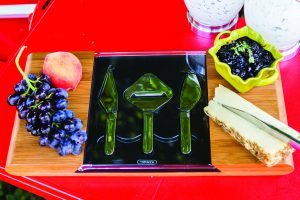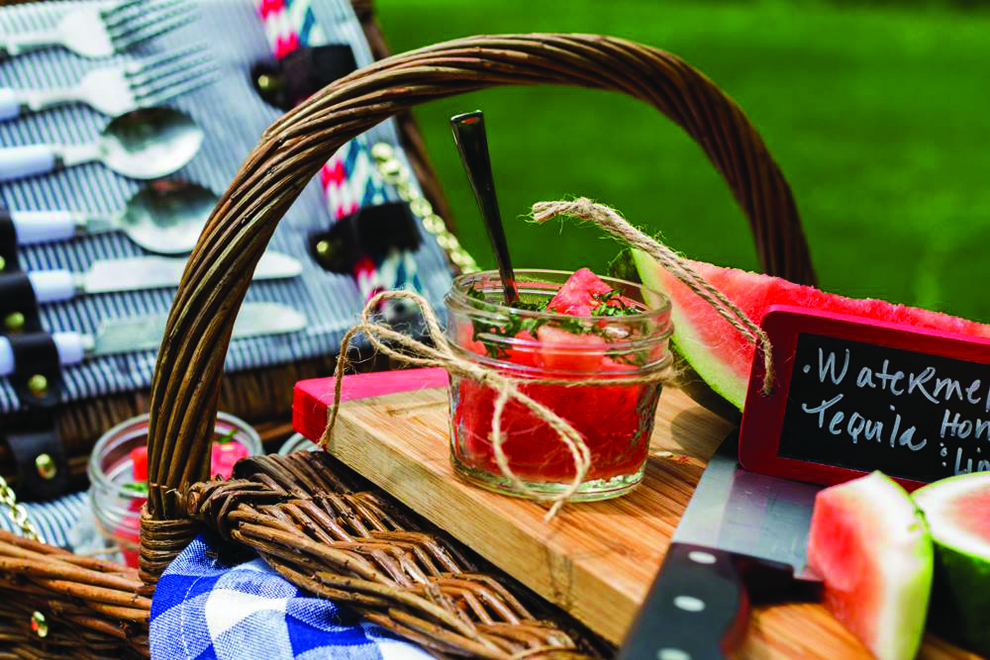 To be innovative and successful in today’s complex marketplace, housewares manufacturers need to focus their strategy, listen to the consumer, deliver more value, enable creativity and experience and engage consumers in new ways, IHA’s lifestyle trends forecaster Tom Mirabile told attendees at the 2015 International Home + Housewares Show.
To be innovative and successful in today’s complex marketplace, housewares manufacturers need to focus their strategy, listen to the consumer, deliver more value, enable creativity and experience and engage consumers in new ways, IHA’s lifestyle trends forecaster Tom Mirabile told attendees at the 2015 International Home + Housewares Show.
“You have to ask yourself: ‘Am I just putting a product out on the market or out on my store floor? Or am I enabling people to live the kind of lives they want to lead?,’” Mirabile said.
Pulling together insights from the worlds of fashion, television, hospitality, retail, housing, social media and more, Mirabile shared top lifestyle trends and key opportunities for the housewares industry.
One of these lifestyle trends is the increase in both multi-generational and single households. The marriage rate is at its lowest point in over a century, and the majority of Americans over age 16 are now single. Mirabile advised attendees to focus on these new types of households, and keep in mind that 40 percent of weddings are for older consumers who are remarrying.
 In addition, shopping is increasingly an omni-channel experience. “The average consumer has about 10 different touch points for every purchasing decision, meaning they’re looking it up online, they’re seeing it in the store, they’re seeing an ad or reading a magazine,” he explained. “Yet online purchases only represent 5 percent of all retail spending in the U.S. Even among shoppers who do that, 77 percent still go to a bricks and mortar store to make an actual purchase.”
In addition, shopping is increasingly an omni-channel experience. “The average consumer has about 10 different touch points for every purchasing decision, meaning they’re looking it up online, they’re seeing it in the store, they’re seeing an ad or reading a magazine,” he explained. “Yet online purchases only represent 5 percent of all retail spending in the U.S. Even among shoppers who do that, 77 percent still go to a bricks and mortar store to make an actual purchase.”
That gives retailers tremendous opportunities to engage consumers, share knowledge about products and influence spending behavior. Generational differences also are playing a big role in how consumers want to live, how they define value and how they shop. “It’s a complex world with three unique adult spending generations,” Mirabile said. “Price, service and design all have divergent meanings to each generation.”
It’s a myth that Generation Y only shops online, he said. They actually love to shop retail, especially in an interactive environment where different items are grouped together. However, it’s important to keep in mind that many in Generation Y are still defining their style, they are more sensitive to price, they desire authenticity in their purchases and are generally design savvy.
Generation X is largely the family generation, and they are more focused on trading up or making their lives more efficient. They are looking for opportunities to improve their personal and their family’s well-being, increase connectivity and take part in experiences such as learning and adventure. They are now the generation with 9th highest net worth and the highest income.
 Boomers, on the other hand, are at a point where they are repurposing what they have. Thirty-nine percent plan a major home improvement project in the next three years.
Boomers, on the other hand, are at a point where they are repurposing what they have. Thirty-nine percent plan a major home improvement project in the next three years.
Yet with all the talk of generational differences, Mirabile said it’s also beneficial to look at generational commonalities. These include: a desire for global stewardship, interest in health and wellness, a shift in trust from retail or brand-generated content to consumer-generated content, a search for “the good life” (a back to basics approach to family, friends, home and life), thoughtful consumption, life balance goals and a desire for products and marketing personalized to themselves.
Value can mean different things to different generations, but “across all generations, the newest component of value is the story,” said Mirabile. “The story is incredibly important.”
Among the ways manufacturers can deliver value is with design that is on-trend and with products offering some of the attributes that consumers are looking for today: artisanal details, healthy environments, home solutions, social experiences and flexibility.
Another important element is enabling consumers to be creative and take part in interesting experiences. These lifestyle trends may take the form of products that assist in popular DIY food and drink preparation, items that allow consumers to experiment with current food trends such as pub grub, street food or kitschy snacks, or items to enhance the dinner party revival or other entertaining experiences. Retail stores that create environments that allow consumers to interact with products will also be successful.
In fact, the omni-channel environment allows for many opportunities to engage with customers in new ways. According to the 2015 Insight Survey conducted by Mirabile for the IHA, social media is still an under-utilized resource in the housewares industry. Only 16 percent of respondents said they were fully invested in social media; 64 percent said their social media plans were somewhat strategized but not fully executed; and 20 percent said they had no strategy at all.
In the end, innovation is a key piece of the puzzle. “Take the time to focus and invest in innovation,” Mirabile said. “It’s never about luck. The people who are winning have a strategy, and innovation is a big part of that.”
The audio recording of the presentation is available at http://www.housewares.org/kc/ed/15.aspx



